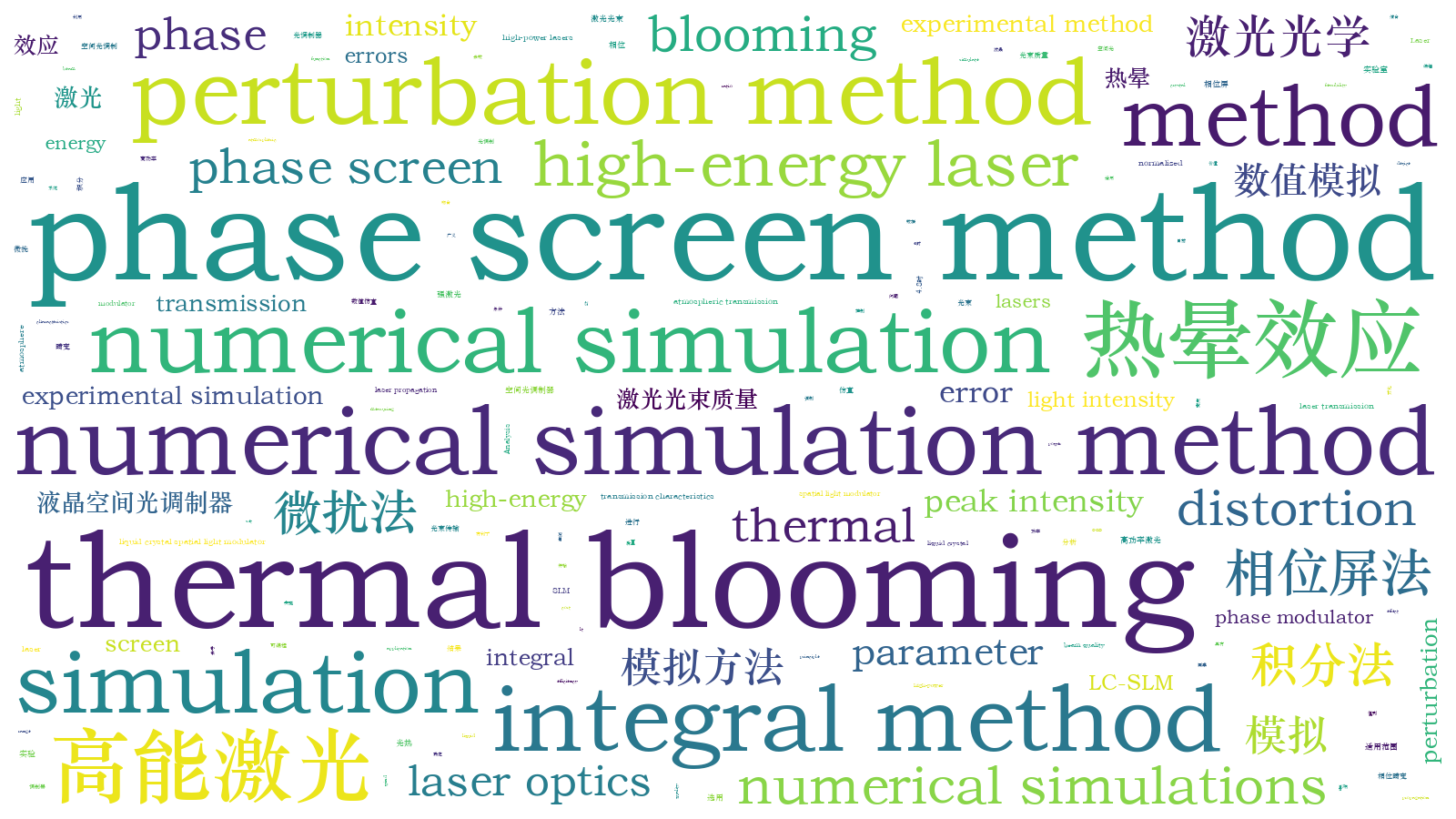高能激光热晕效应数值模拟方法的适用范围分析【增强内容出版】
Thermal blooming severely reduces beam quality and limits the efficiency of high-energy laser transmission in the atmosphere. Therefore, it is important to study the thermal blooming of high-energy laser propagation in the atmosphere systematically. Numerical simulation of thermal blooming is beneficial for the application of high-energy lasers. Numerical simulation methods for thermal blooming include perturbation, integral, and phase screen methods. However, most existing studies used only one of them for simulation, which led to obvious errors under some conditions. In this study, we compared the results of three methods and selected an appropriate numerical simulation range for each method based on the reported experimental results. In addition, field experiments for measuring the transmission of high-energy lasers in the atmosphere are complicated, and the experimental conditions are uncontrollable. Therefore, using a liquid crystal spatial light modulator (LC-SLM) based on the transmission characteristics of high-power lasers in the atmosphere is a valuable and cost-saving method for laboratory simulations of thermal blooming. We extracted the thermal blooming distortion phase based on the principle of the numerical simulation method and then used an LC-SLM to simulate thermal blooming in the laboratory. The experimental simulation results are consistent with the numerical simulation results.
In this study, numerical simulations of thermal blooming were performed using the perturbation, integral, and phase screen methods. First, the results of different numerical simulation methods for different transmission distances were compared. The results obtained using the different numerical simulation methods were significantly different, even under identical conditions. The relative peak intensity IREL (ratio of maximum received light intensity to maximum initial light intensity) was measured as a function of the generalized distortion parameter N in the reported reference. A reasonably fitted curve was then selected as the reference data. The reasonable ranges for each method were determined by comparing the three numerical simulation results with the reference results. Subsequently, the thermal blooming distortion phase was extracted according to the applicable numerical simulation method under the conditions set for the laboratory experiments. Finally, laboratory experiments on thermal blooming were conducted using LC-SLM.
The relationship between the normalized peak intensity IREL generated by the three numerical simulation methods and the generalized distortion parameter N is compared with the reference data at different transmission distances (Fig. 3). The errors of the perturbation and integral methods are small when N<4.8 (the errors of the two methods are approximate), and the error of the phase screen method is small when N>4.8. The relationship between the normalized peak intensity IREL generated by the three numerical simulation methods and the generalized distortion parameter N is compared with the reference line at different initial laser powers (Fig. 4). The error of the perturbation method is small when N<3, that of the integral method is small when 3<N<4.8, and that of the phase screen method is small when N>4.8. The relationship between the normalized peak intensity IREL generated by the three numerical simulation methods and the generalized distortion parameter N is compared with the reference line at different wind speeds (Fig. 5). The error of the perturbation method is small when N<2.8, that of the integral method is small when 2.8<N<4.8, and that of the phase screen method is small when N>4.8.
In this study, various ranges of generalized distortion parameter N applicable to each numerical simulation method are selected by comparing the error between the normalized peak intensity IREL generated by the three numerical simulation methods and the reference line under different setting conditions. When the generalized distortion parameter N is less than 3, the error of the integral method is the smallest. When the generalized distortion parameter N ranges from 3 to 4.8, the error of the perturbation method is the smallest. When the generalized distortion parameter N is greater than 4.8, the error of the phase screen method is the smallest. Additionally, laboratory experiments are performed using LC-SLM. The phase of the thermal blooming distortion is accurately extracted and added to the phase modulator, and its effect of thermal blooming distortion is recorded using a CCD. The experimental results are in good agreement with the simulation results, confirming the feasibility of this experimental method. This work proposes a quantitative, accurate, programmable, and easily repeatable laboratory simulation device that provides an effective means for laboratory evaluations of the atmospheric transmission of high-energy lasers.
张琪, 胡启立, 王红燕, 胡鸣, 徐星宇, 吴晶晶, 胡立发. 高能激光热晕效应数值模拟方法的适用范围分析[J]. 中国激光, 2024, 51(8): 0805003. Qi Zhang, Qili Hu, Hongyan Wang, Ming Hu, Xingyu Xu, Jingjing Wu, Lifa Hu. Analysis of Applicable Scope of Numerical Simulation Method for Thermal Blooming of High-Energy Laser[J]. Chinese Journal of Lasers, 2024, 51(8): 0805003.







